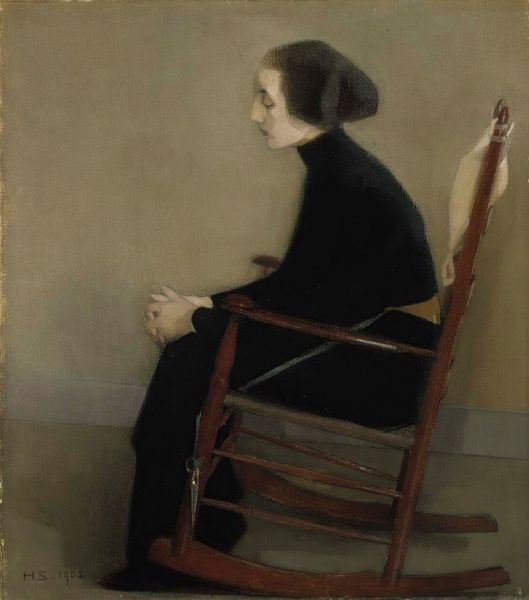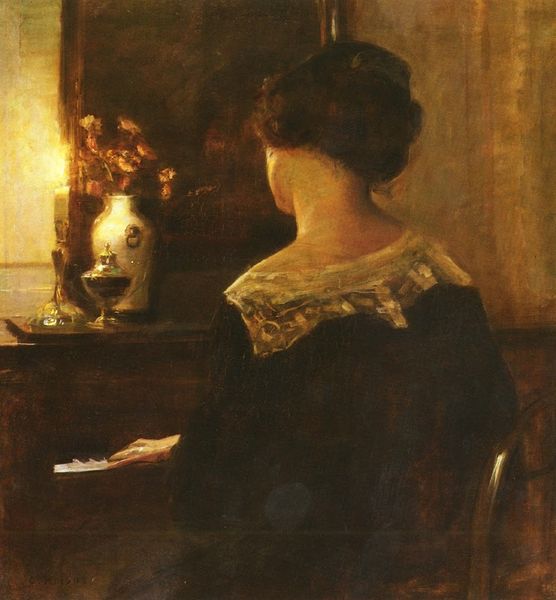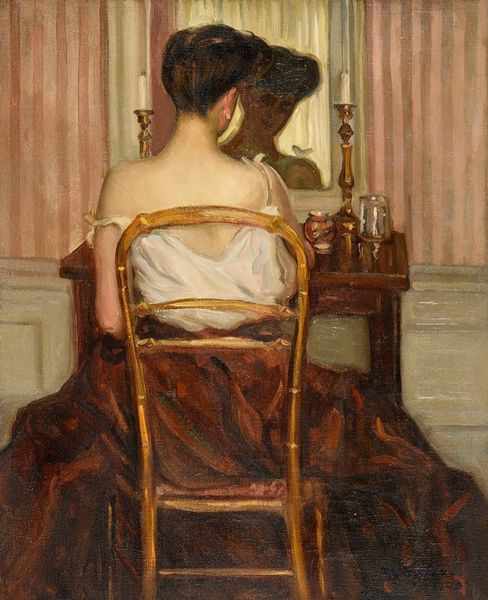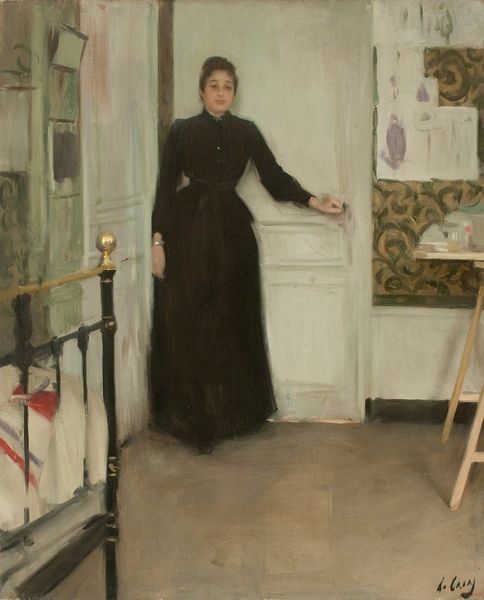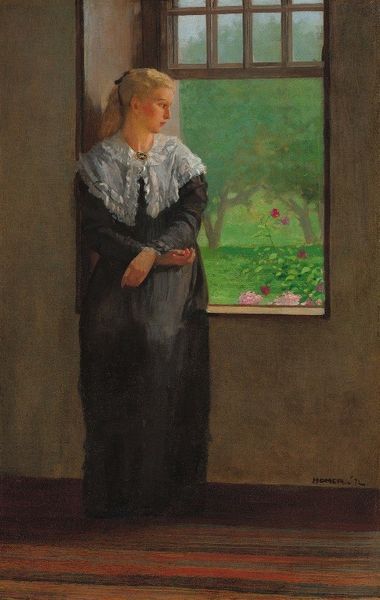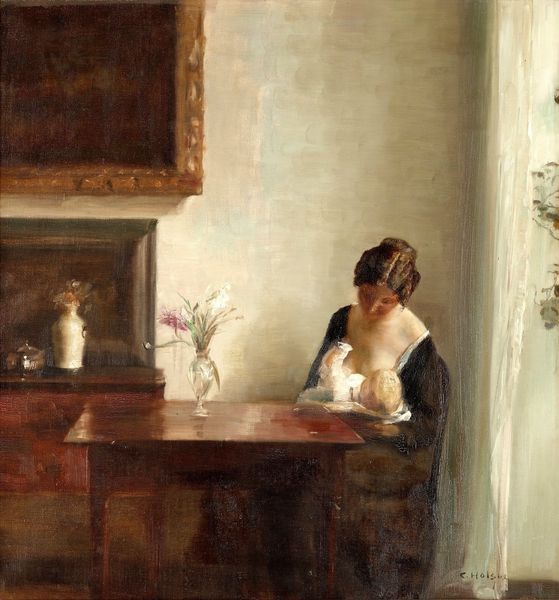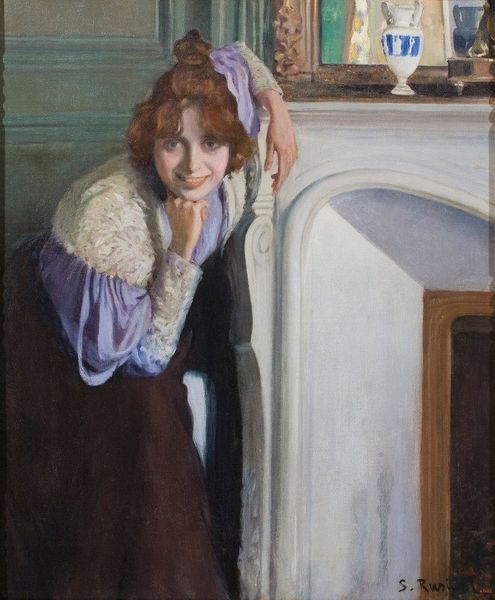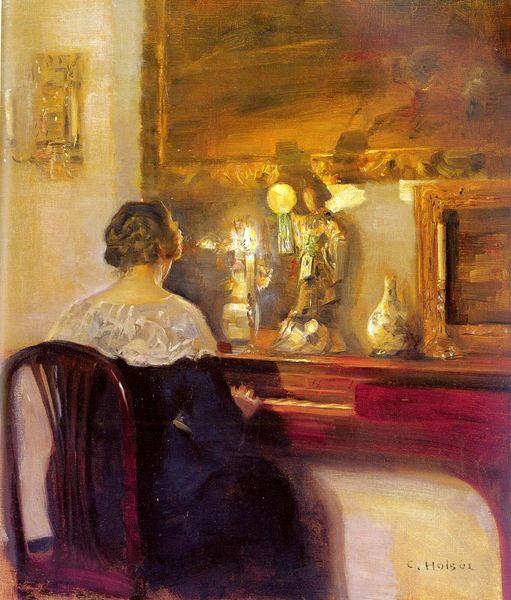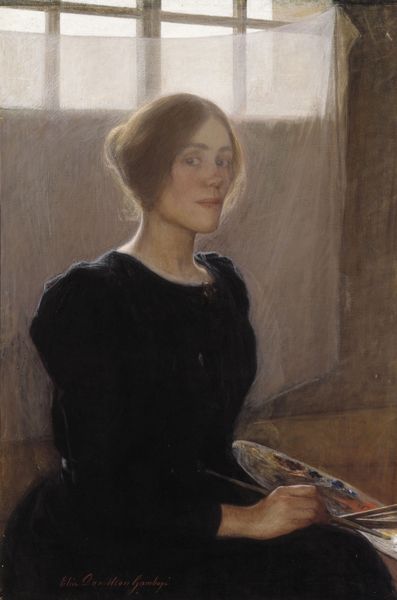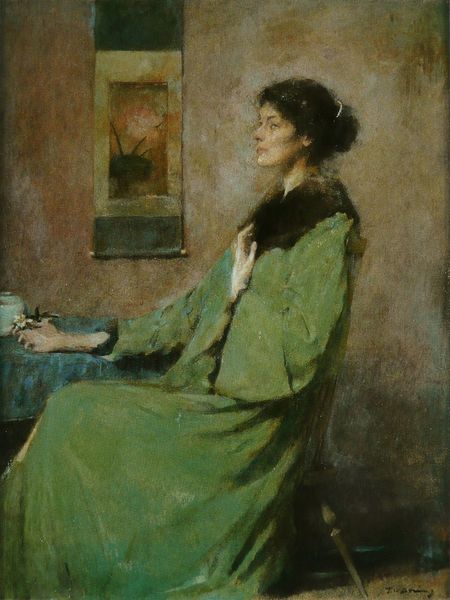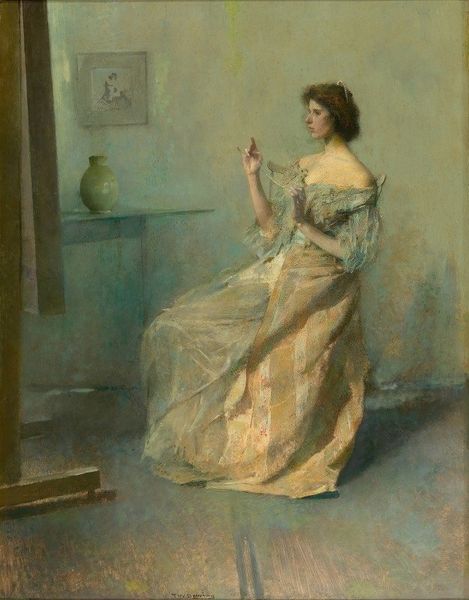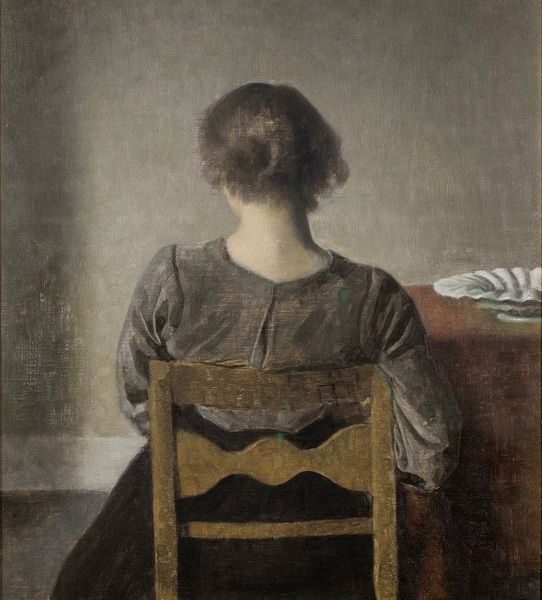
Copyright: Public Domain: Artvee
Curator: The piece before us is Santiago Rusiñol's "Female Figure," painted in 1894. What strikes you first? Editor: Immediately, it’s the interplay of interior spaces defined by the mirrors; there's a doubling, a layering of the visual field that feels incredibly modern for its time. And the subdued palette contributes to an atmosphere of quietude. Curator: Absolutely. Consider the mirror as more than a simple reflective surface. In art history, it's often a symbol of vanity, self-awareness, or even a portal to another dimension. The woman, with her profile turned, seems oblivious, but the man’s reflected gaze is quite intent, offering a duality of representation. Editor: True, the tonal range, built of grays and blacks, feels deliberately flattened, almost stylized. It pushes beyond strict realism towards Symbolism and prefigures many tenets of modernist painting. Note also how Rusiñol manages light; it is almost a caress, smoothing over textures and imbuing the composition with a very specific, almost melancholic, feeling. Curator: That melancholic mood is key. The black dress can certainly be interpreted as mourning attire, yet its simplicity also speaks to the evolving aesthetics of the time – a turn away from overt ornamentation towards a more internalized expression. This evokes a sense of "Intimism," hinting at quiet contemplation within domestic spaces. Editor: Indeed, the patterning on the wallpaper and the arrangement of objects atop the mantelpiece create an interesting counterpoint to the figure's contained posture. The eye travels constantly from flat pattern to receding plane. It keeps the image from resolving too neatly, leaving us with an atmosphere ripe for individual readings. Curator: And this tension mirrors the internal experience, doesn’t it? The artist creates layers of psychological nuance that resonate across time. We perceive a poised figure facing away from what may be her domestic and emotional center. Editor: Well put. I came to this with a set of strictly formal expectations and have instead found myself pondering an interiority suggested as much through restraint as overt expressiveness. Curator: And for me, it’s the subtle echo of humanity—captured not just in her presence but also in her reflection—that stays.
Comments
No comments
Be the first to comment and join the conversation on the ultimate creative platform.
